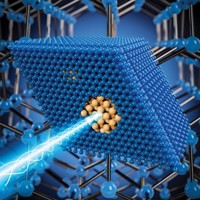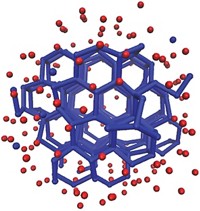Advertisement
Grab your lab coat. Let's get started
Welcome!
Welcome!
Create an account below to get 6 C&EN articles per month, receive newsletters and more - all free.
It seems this is your first time logging in online. Please enter the following information to continue.
As an ACS member you automatically get access to this site. All we need is few more details to create your reading experience.
Not you? Sign in with a different account.
Not you? Sign in with a different account.
ERROR 1
ERROR 1
ERROR 2
ERROR 2
ERROR 2
ERROR 2
ERROR 2
Password and Confirm password must match.
If you have an ACS member number, please enter it here so we can link this account to your membership. (optional)
ERROR 2
ACS values your privacy. By submitting your information, you are gaining access to C&EN and subscribing to our weekly newsletter. We use the information you provide to make your reading experience better, and we will never sell your data to third party members.
Materials
Under pressure, carbon dioxide mimics glass
June 19, 2006
| A version of this story appeared in
Volume 84, Issue 25
Carbon, a multitalented element, has yet another trick to boast of. Researchers at the European Laboratory for Nonlinear Spectroscopy and the National Institute for the Physics of Matter, both in Italy, have coaxed carbon dioxide into forming glass at room temperature and high pressures (Nature 2006, 441, 857). In the newly synthesized solid, dubbed amorphous carbonia, or a-carbonia, the molecules form a three-dimensional interconnected network, similar to silica glass. The substance is very different from CO2's solid-phase cousin, dry ice, in which the molecules stay close together but remain separate. Earlier thermodynamics simulations by other scientists showed that such a phase could be metastable, but Mario Santoro, Federico Gorelli, and colleagues are the first to synthesize it. To prepare the glass, they compressed carbon dioxide molecules in a diamond anvil cell at pressures of 40 to 76 gigapascal, yielding a stable, stiff solid. This research may illuminate natural phenomena where CO2 is pressurized, such as ice-covered planets and asteroids, and help develop new supercritical CO2 solvents, the team suggests.





Join the conversation
Contact the reporter
Submit a Letter to the Editor for publication
Engage with us on Twitter